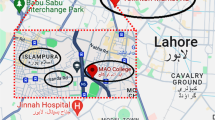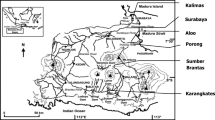Abstract
One of the narrow-clawed crayfish of the freshwater is named Astacus leptodactylus. As the only crayfish species native to Iranian waters, Astacus leptodactylus is commonly distributed in Iranian water resources. Crayfish is considered a suitable biological indicator of the quality of water, a measure for the assessment of ecology and toxicology (ecotoxicology), and a model organism for the determination of the impact of pollutants. Blood biochemical parameters are useful indicators used to assess the physiological conditions of aquatic animals’ response to stress, contamination, physiological, and ecological changes; for this to work, knowing the normal parameter levels is vital. This study was aimed to determine the normal interval of the biochemical parameters in these species in Iran, which appears to be necessary for future planning and studies, especially for ecotoxicological studies. Biochemical parameters analyzed in this study were glucose (11.37 ± 1.53 mg/dl), urea (5.58 ± 0.62 mg/dl), creatinine (0.21 ± 0.02 mg/dl), AST (7.54 ± 0.82 U/L), ALT (7.04 ± 0.97 U/L), ALP (380.44 ± 33.46 U/L), total bilirubin (0.45 ± 0.32 mg/dl), calcium (8.39 ± 1.15 mg/dl), phosphorus (2.35 ± 0.24 mg/dl), total protein (1.72 ± 0.16 g/dl), albumin (4.30 ± 0.2 g/dl), iron (128.79 ± 12.54micg/dl), and magnesium (1.84 ± 0.32 mg/dl). The total number of hemocyte in samples was calculated to be mean 5.3 × 104 per milliliter (n = 30, range 3.9 × 103–1.59 × 105).



Similar content being viewed by others
References
Ahn D, Kawai T, Kim S, Rho HS, Jung JW, Kim W, Lim BJ, Kim MS, Min G (2006) Phylogeny of northern hemisphere freshwater crayfishes based on 16S rRNA gene analysis. Korean J Genetic 28:185
Ávila-Villa LA, Fimbres-Olivarria D, García-Sánchez G, Gollas-Galván T, Hernández-López J, Martínez-Porchas M (2012) Physiological and immune responses of white shrimp (Litopenaeusvannamei) infected with necrotizing hepatopancreatitis bacterium. Aquaculture 324:14–19
Balazs GH, Olbrich S, Tumbleson M (1974) Serum constituents of the Malaysian prawn (Macrobrachiumrosenbergii) and pink shrimp (Penaeusmarginatus). Aquaculture 3:147–157
Chen JC, Chia PG (1996) Oxygen uptake and nitrogen excretion of juvenile Scylla serrataat different temperature and salinity levels. J Crustac Biol 16:437–442
Depledge M, Chan R, Loh T (1986) Iron distribution and transport in Scylla serrata (Forskal). Asian Mar Biol 3:101–110
Ghidalia W, Fine J, Marneux M (1972) On the presence of an iron-binding protein in the serum of a decapod crustacean [Macropipuspuber (Linne)]. Comp Biochem Physiol B Comp Biochem 41:349–354
Guner U (2010) Heavy metal effects on P, Ca, Mg, and total protein contents in embryonic pleopodal eggs and stage-1 juveniles of freshwater crayfish Astacus leptodactylus (Eschscholtz, 1823). Turk J Biol 34:405–412
Gustafson LL, Stoskopf MK, Showers W, Cope G, Eads C, Linnehan R, Kwak TJ, Andersen B, Levine JF (2005) Reference ranges for hemolymph chemistries from Elliptiocomplanata of North Carolina. Dis Aquat Org 65:167–176
Harlioğlu MM (2004) The present situation of freshwater crayfish, Astacus leptodactylus (Eschscholtz, 1823) in Turkey. Aquaculture 230:181–187
Huebers HA, Huebers E, Finch CA, Martin AW (1982) Characterization of an invertebrate transferrin from the crabCancer magister (Arthropoda). J Comp Physiol B Biochem Syst Environ Physiol 148:101–109
Jayasinghe JMPK, Phillips MJ, Anas MUM (2008) Behaviour of environmental iron, manganese and aluminium in relation to brown/black gill syndrome in Penaeus monodon cultured in ponds on acid sulphate soils. Sri Lanka J Aquat Sci 13:83–94
Jiang G, Yu R, Zhou M (2004) Modulatory effects of ammonia-N on the immune system of Penaeusjaponicus to virulence of white spot syndrome virus. Aquaculture 241:61–75
Karimpour M, Harlioğlu M, Aksu Ö (2011) Status of freshwater crayfish (Astacus leptodactylus) in Iran. Knowl Manag Aquat Ec 401:18
Kazmierczak A, Adamska M, Gondko R (1978) The content of copper, 1ron and proteins in the serum of Decapoda occurring in Poland. Comp Biochem Physiol 60A:11–12
Klobučar GI, Malev O, Šrut M, Štambuk A, Lorenzon S, Cvetković Ž, Ferrero EA, Maguire I (2012) Genotoxicity monitoring of freshwater environments using caged crayfish (Astacus leptodactylus). Chemosphere 87:62–67
Köksal G (1988) Astacus leptodactylus in Europe. in: Freshwater crayfish: biology, management and exploitation (eds : Holdich & Lowery). Croom Helm, London, pp 365–400
Lorenzon S (2005) Hyperglycemic stress response in Crustacea. ISJ 2:132–141
Lorenzon S, Edomi P, Giulianini PG, Mettulio R, Ferrero EA (2004) Variation of crustacean hyperglycemic hormone (cHH) level in the eyestalk and haemolymph of the shrimp Palaemonelegans following stress. J Exp Biol 207:4205–4213
Martínez-Córdova LR, Gollas-Galván T, Garibay-Valdez E, Valenzuela-Gutiérrez R, Martínez-Porchas M, Porchas-Cornejo MA, Sánchez-Paz A, Mendoza-Cano F (2016) Physiological and immune response of Litopenaeusvannamei undergoing the acute phase of the necrotizing hepatopancreatitis disease and after being treated with oxytetracycline and FF. Lat Am J Aquat Res 44:535–545
Morris S, Van Aardt W, Ahern M (2005) The effect of lead on the metabolic and energetic status of the Yabby, Cherax destructor, during environmental hypoxia. Aquat Toxicol 75:16–31
Niemeijer D, de Groot RS (2008) A conceptual framework for selecting environmental indicator sets. Ecol Indic 8:14–25
Noga E (2000) Hemolymph biomarkers of crustacean health. Rec Advan Mar Biotechnol 5:125–163
Ren Q, Pan L, Zhao Q, Si L (2015) Ammonia and urea excretion in the swimming crab Portunustrituberculatus exposed to elevated ambient ammonia-N. Comp Biochem Physiol A Mol Integ Physiol 187:48–54
Safari O, Shahsavani D, Paolucci M, Atash MMS (2014) Single or combined effects of fructo-and mannan oligosaccharide supplements on the growth performance, nutrient digestibility, immune responses and stress resistance of juvenile narrow clawed crayfish, Astacus leptodactylus (Eschscholtz, 1823). Aquaculture 432:192–203
Samnejhad A, Afsharnasab M, Kakoolaki S, Sepahdari A (2016) Effect of Aeromonashydrophila infection with high and normal water temperature on total hemocyte count, total plasma protein and histopathological differences in freshwater crayfish Astacus leptodactylus. Surv Fish Sci 2:45–65
Sepici-Dincel A, Alparslan ZN, Benli AÇK, Selvi M, Sarıkaya R, Özkul İA, Erkoç F (2013) Hemolymph biochemical parameters reference intervals and total hemocyte counts of narrow clawed crayfish Astacus leptodactylus (Eschscholtz, 1823). Ecol Indic 24:305–309
Smith SA, Berkson JM, Barratt RA (2002) Horseshoe crab (Limulus polyphemus) hemolymph, biochemical and immunological parameters. Proceedings of the 33rd Annual Conference of the International Association for Aquatic Animal Medicine Albufeira, Portugal
Turnhout E, Hisschemöller M, Eijsackers H (2007) Ecological indicators: between the two fires of science and policy. Ecol Indic 7:215–228
Van Wettere A, Lewbart GA (2007) Cytologic diagnosis of diseases of invertebrates. Vet Clin Exo Anim Pract 10:235–254
Vijayavel K, Anbuselvam C, Balasubramanian M, Samuel VD, Gopalakrishnan S (2006) Assessment of biochemical components and enzyme activities in the estuarine crab Scyllatranquebarica from naphthalene contaminated habitants. Ecotoxicol 15:469–476
Wheatly MG (1999) Calcium homeostasis in Crustacea: the evolving role of branchial, renal, digestive and hypodermal epithelia. J Exp Zool A Ecol Genet Physiol 283:620–640
Yan Q, Xie S, Zhu X, Lei W, Yang Y (2007) Dietary methionine requirement for juvenile rockfish, Sebastes schlegeli. Aquacult Nut 13:163–169
Acknowledgments
The authors would like to thank the Research Council of Shiraz University and School of Veterinary Medicine, Shiraz University, for their technical support of this study.
Funding
This work received financial support from the Research Council of Shiraz University and School of Veterinary Medicine, Shiraz University (Grant no. 71-GR-VT-5).
Author information
Authors and Affiliations
Corresponding author
Ethics declarations
Conflict of interest
The authors declare that they have no conflict of interests.
Ethical approval
All applicable international, national, and/or institutional guidelines for the care and use of animals were followed.
Animal ethics
All animal experiments were approved by the State Committee on Animal Ethics, Shiraz University, Shiraz, Iran (IACUC no.: 4687/63). The recommendations of the European Council Directive (86/609/EC) of November 24, 1986, regarding the standards in the protection of animals used for experimental purposes, were also followed.
Additional information
Publisher’s note
Springer Nature remains neutral with regard to jurisdictional claims in published maps and institutional affiliations.
Rights and permissions
About this article
Cite this article
Safaeian, S., Gholamhosseini, A., Heidari, F. et al. Biochemical and total hemocyte count profiles of long-clawed crayfish (Astacus leptodactylus) as a reference interval in southern Iran. Comp Clin Pathol 29, 361–368 (2020). https://doi.org/10.1007/s00580-019-03065-z
Received:
Accepted:
Published:
Issue Date:
DOI: https://doi.org/10.1007/s00580-019-03065-z




